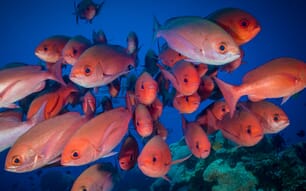Saprolegnia parasitica is an oomycete (similar morphologically to fungi, but evolutionarily more like some species of algae) that causes an infection known as saprolegniosis.
"This pathogen has become a problem in several natural aquatic ecosystems and aquaculture industry, which generates considerable economic losses mainly in the production of salmon and trout," says Javier Dieguez-Uribeondo, CSIC researcher at the Royal Botanical Garden of Madrid.
In this pathogen and other species, scientists have found several events of horizontal gene transfer and found that Saprolegnia has acquired throughout its evolution mainly bacterial genes.
"In this work we have identified about 40 genes that could be related to the pathogenesis and that processes were probably recently acquired by these pathogens. In fact, it is considered that these events were instrumental in the evolution of these organisms animal pathogenesis," says Dieguez-Uribeondo.
Pathogen control
According to investigators, the prohibition of the use of malachite green, a traditional treatment with carcinogenic, has caused the aquaculture industry is devoid of control tools for this pathogen.
"Our work opens a new field of research crucial in the design of alternative treatments in aquaculture. Genome sequencing can know not only the mechanisms of infection, but also genes involved in pathogenicity, key to future treatments," CSIC researcher emphasizes.
The study also demonstrates the marked differences between the genomes of pathogenic species of plant and animal oomycete. Future studies will provide light to thorough knowledge of the structure and function of these enigmatic eukaryotic genomes that have adapted to a variety of ecological niches and host species.




